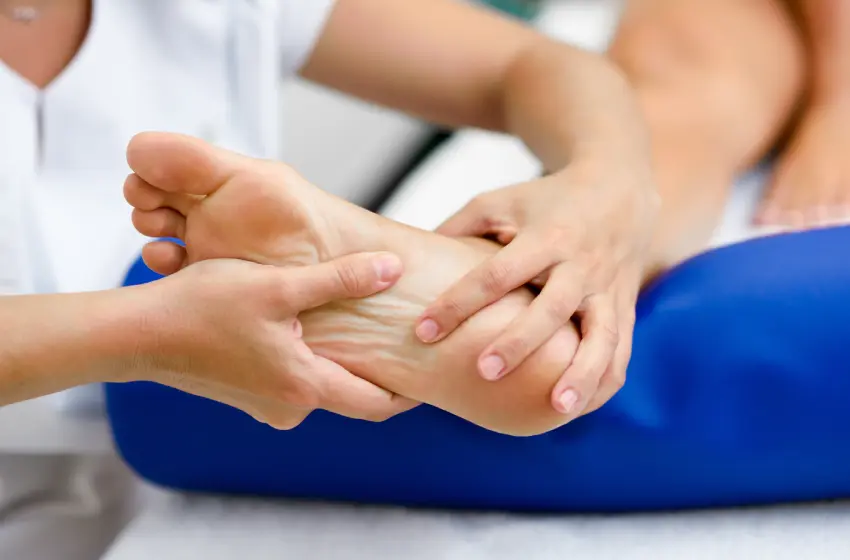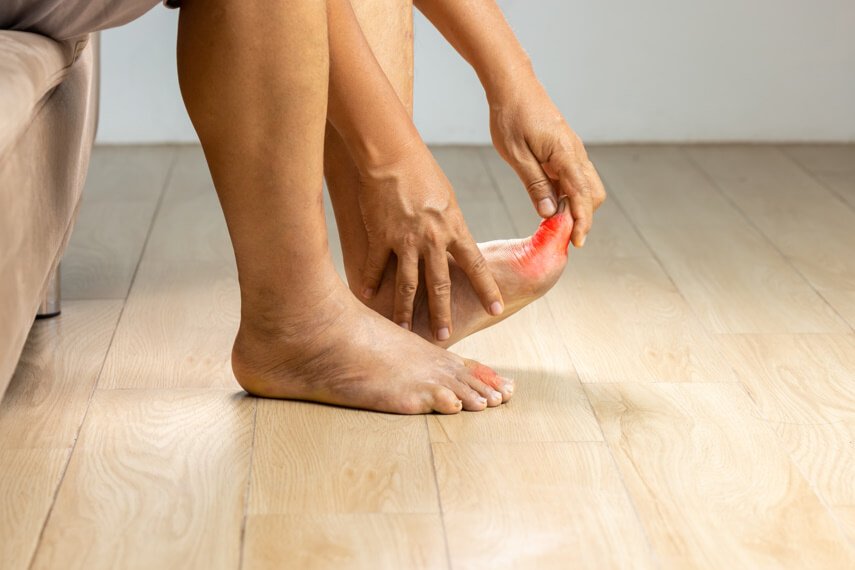Bunions in Diabetic Patients: Risks, Care Tips & Treatment Options
Foot health is a critical concern for individuals living with diabetes. Among the many foot complications associated with the condition, bunions in diabetic patients are particularly concerning due to the increased risk of infection, nerve damage, and delayed healing. At Surat Diabetic Foot Clinic, we emphasize early detection and appropriate management to prevent serious complications. This blog explores the unique risks, symptoms, and treatment options available for managing diabetic foot bunions.
Understanding Bunions: The Basics
A bunion (medically known as hallux valgus) is a bony bump that forms on the joint at the base of your big toe. It occurs when the bones in the front part of your foot move out of place, causing the tip of the big toe to angle toward the smaller toes. This misalignment causes the joint to stick out, often leading to discomfort, redness, swelling, and restricted movement. In diabetic individuals, even a minor deformity like a diabetic bunion can escalate into a serious concern due to their compromised circulation and nerve function.
Why Diabetics Are at Higher Risk
People with diabetes are more likely to develop foot deformities, including bunions, due to:
- Peripheral neuropathywhich reduces sensation in the feet.
- Poor circulationwhich delays healing and increases infection risk.
- Foot muscle imbalance,a common complication of long-term diabetes.
- Higher susceptibility to skin breakdown,which can lead to ulcers near the bunion.
These factors make bunions in diabetic patients not just a cosmetic issue, but a potential gateway to more severe foot conditions, including diabetic foot ulcers and amputation if not managed early and properly.
Unique Complications for Diabetic Patients
A diabetic foot bunion can lead to several complications:
- Chronic pain and mobility issues
- Ulceration over the bunion site due to constant pressure
- Infection,which may spread to the bone (osteomyelitis)
- Worsening of neuropathy symptoms, including diabetic foot burning
In severe cases, patients may require bunion surgery. However, bunion surgery in diabetes patients must be approached with caution due to the elevated risk of poor wound healing and post-operative infection.
Recognising Bunions in Diabetic Patients
Visual Signs and Symptoms
- Noticeable bump at the base of the big toe
- Redness, swelling, and tenderness around the joint
- Restricted movement or difficulty wearing regular shoes
- Corns or calluses where the toes overlap
Diabetic-Specific Warning Signs
- Numbness or tingling near the bunion
- Wounds or ulcers that don’t heal
- Sudden increase in foot temperature or discolouration
- Persistent burning sensation in the diabetic foot
If any of these symptoms appear, it’s vital to consult a diabetic foot clinic without delay.
When Diabetic Patients Should Seek Professional Help
Diabetics should not delay seeking help once a bunion is suspected. Prompt evaluation can prevent the progression to severe deformities or ulcers. You should seek care if:
- Pain or deformity is worsening
- Ulcers or open wounds are visible
- There’s redness, swelling, or warmth (possible infection)
- You’re experiencing balance or walking difficulties
At Surat Diabetic Foot Clinic, our specialists provide comprehensive care to assess bunions and related risks in diabetic patients.
Treatment Strategies: Conservative Management
Early-stage bunions in diabetics can often be managed without surgery through a combination of non-invasive strategies.
Footwear Modifications
Wearing wide, deep-toe box shoes helps reduce pressure on the bunion. Diabetic-specific shoes are designed to prevent skin damage and distribute weight evenly.
Orthotic Interventions
Custom orthotics can correct misalignment, relieve pain, and prevent further deformity. They are particularly beneficial for individuals with neuropathy or poor foot mechanics.
Padding and Protection
Soft bunion pads or toe spacers can cushion the joint and minimise friction with shoes, reducing the risk of ulcers or skin breakdown.
Pharmacological Management
Pain and inflammation can be managed using non-steroidal anti-inflammatory drugs (NSAIDs), though diabetic patients should consult their physician before starting any medication. Topical treatments may also be prescribed.
Prevention Strategies for Diabetic Patients
Preventing bunions in diabetics starts with proactive foot care:
- Routine foot exams at a diabetic foot clinic
- Daily self-inspections for changes in foot shape, colour, or sensation
- Maintaining proper foot hygiene and moisturising dry skin
- Wearing supportive footwear and avoiding high heels or narrow shoes
- Controlling blood sugar levels to slow the progression of neuropathy and circulation issues
These practices are essential in reducing the risk of developing not just bunions, but many diabetic foot complications.
Conclusion
Bunions in diabetic patients are more than just a foot deformity - they are a potential trigger for serious health issues if not addressed promptly and properly. From early detection and conservative management to advanced surgical interventions, the team at Surat Diabetic Foot Clinic offers comprehensive, patient-centred care tailored to diabetic needs.
If you're living with diabetes and suspect a bunion or are experiencing foot discomfort, don’t wait. Visit our expert team for a full assessment, personalised care plan, and ongoing support to keep your feet healthy and your mobility intact. Whether you need advice on bunion surgery for diabetes, orthotics, or conservative treatment, we’re here to help you step confidently toward better foot health.
FAQs
Why are bunions more dangerous for diabetic patients?
Bunions can be more dangerous for diabetic patients due to poor circulation and nerve damage (neuropathy), which increases the risk of infection, ulcers, and delayed healing. Even minor foot deformities like a diabetic foot bunion can lead to serious complications if not treated early.
Can bunions in diabetics be treated without surgery?
Yes, many cases of bunions in diabetic patients can be managed with conservative treatments such as custom footwear, orthotics, padding, and anti-inflammatory medication. Bunion surgery is considered only when pain or deformity becomes severe and unresponsive to non-surgical care.
What are the signs that a bunion is becoming serious for a diabetic?
Signs include persistent pain, redness or swelling, open sores or ulcers, numbness or burning sensation, and changes in foot shape. These may indicate complications like infection or nerve involvement and warrant immediate evaluation at a diabetic foot clinic.
How much does bunion treatment cost for diabetics in India?
The cost varies depending on the severity of the bunion and the type of treatment. Conservative management may range from ₹2,000 to ₹10,000, while bunion surgery could cost ₹30,000 to ₹80,000 or more, depending on hospital and surgical requirements.
How can diabetic patients prevent bunions?
Prevention includes wearing proper footwear, maintaining good foot hygiene, regular foot checks, managing blood sugar levels, and visiting a diabetic foot clinic for routine exams. Early care can prevent the progression of diabetic bunions and other foot issues.



.jpg)

